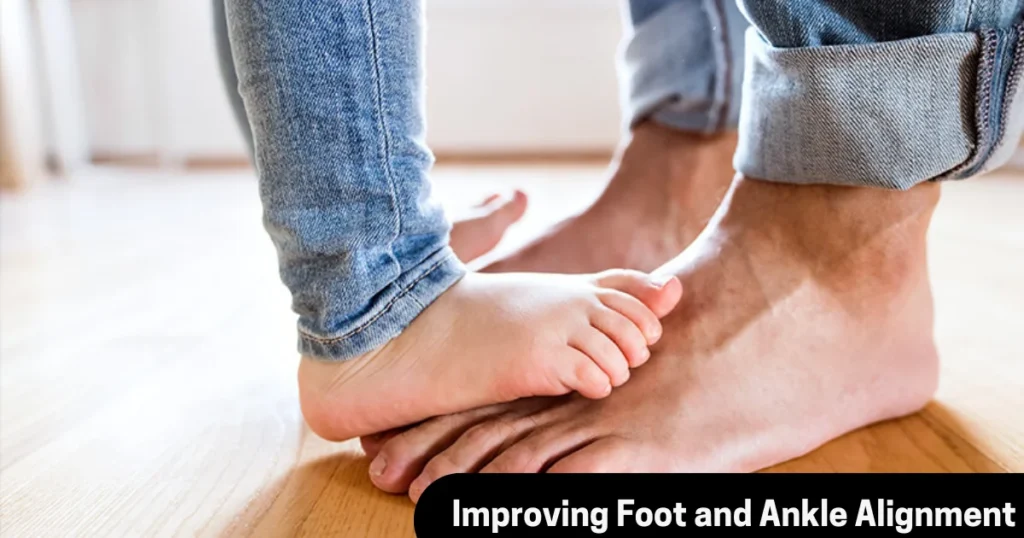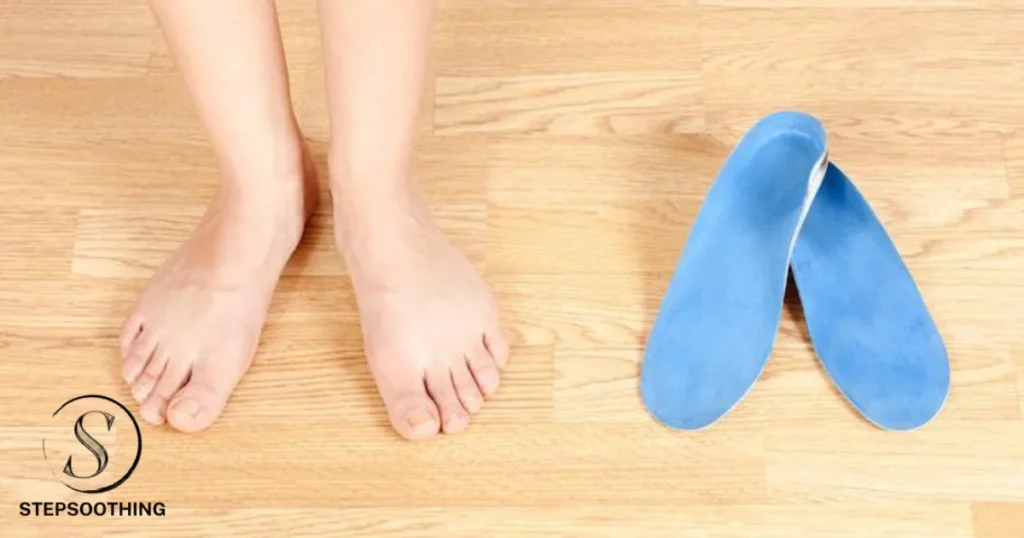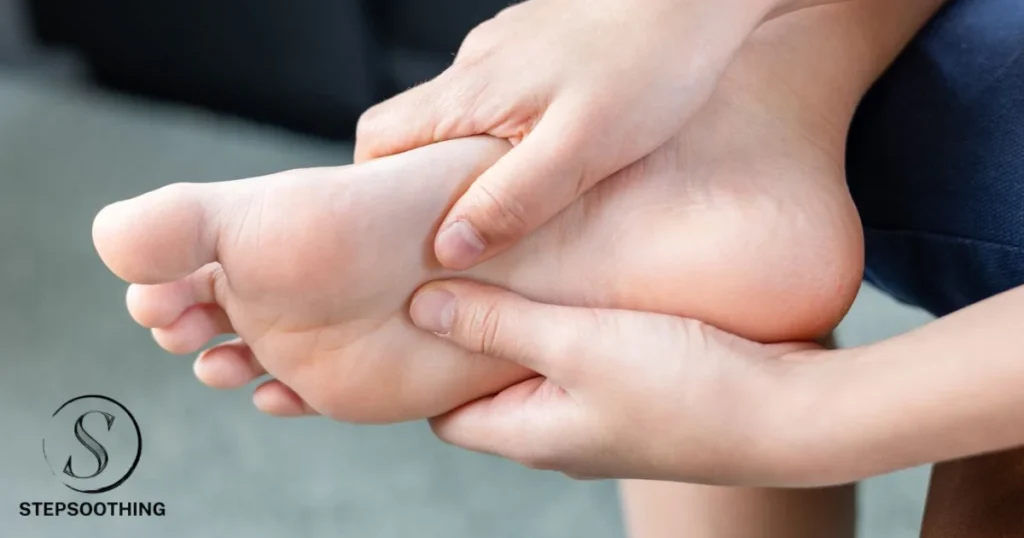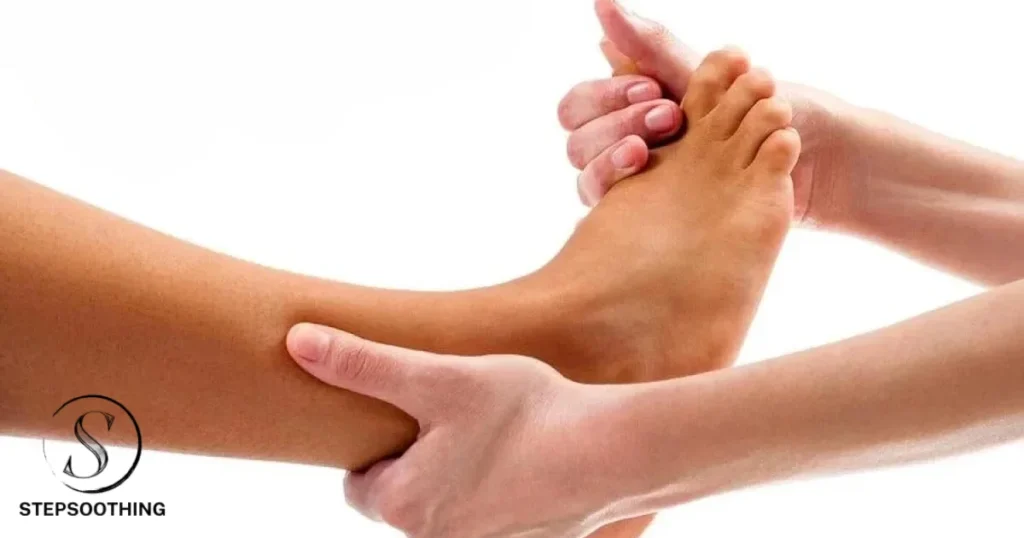Our feet and ankles are the foundation of our body, literally taking the brunt of our weight with every step. Improving foot and ankle alignment is crucial for maintaining good balance, posture, and preventing pain. But how do you know if your alignment is off, and what can you do to fix it? This comprehensive guide will answer all your questions and help you get your feet back on the right track!
Optimizing Foot & Ankle Alignment A Comprehensive Guide

What is Foot and Ankle Alignment?
Imagine your feet and ankles as the building blocks for your entire body. When these blocks are stacked correctly, everything functions smoothly. Foot and ankle alignment refers to the proper positioning of your feet, ankles, and lower legs. This alignment allows your weight to be distributed evenly across your feet, absorbing shock and propelling you forward efficiently.
Signs of Poor Foot and Ankle Alignment

Several signs might indicate that your foot and ankle alignment is less than ideal. These include:
- Foot pain: This can range from a general ache to sharp pains in specific areas like the heel, arch, or toes.
- Ankle pain: Pain or stiffness in the ankle joint can limit your mobility and make walking uncomfortable.
- Bunions and corns: These bony bumps and thickened skin can develop due to excessive pressure on certain areas of your foot.
- Hammertoes: Toes that curl under can be a sign of alignment issues and put pressure on the tips of your toes.
- Flat feet or high arches: While some people naturally have flatter or higher arches, significant deviations from the norm can contribute to alignment problems.
- Uneven wear on shoes: If your shoes wear out unevenly, particularly on the inner or outer soles, it could indicate improper weight distribution.
- Knee pain, hip pain, or back pain: Alignment issues in the feet can sometimes lead to pain in other parts of your body as your body tries to compensate.
Causes of Poor Foot and Ankle Alignment
Several factors can contribute to poor foot and ankle alignment, including:
- Genetics: Some people inherit a predisposition to certain foot types, like flat feet, which can affect alignment.
- Improper footwear: Shoes that don’t provide adequate support or are the wrong size can throw your alignment off balance.
- Repetitive activities: Activities that put a lot of stress on your feet, like running or jumping, can lead to alignment problems over time.
- Injuries: Sprains, fractures, or other injuries to the foot or ankle can disrupt the natural alignment.
- Muscle imbalances: Weak or tight muscles in your legs and feet can affect how your foot strikes the ground and overall alignment.
Benefits of Improving Foot and Ankle Alignment

Taking steps to improve your foot and ankle alignment offers a variety of benefits, including:
- Reduced pain: Proper alignment helps distribute weight evenly, reducing stress on your feet and ankles and alleviating pain.
- Improved balance and stability: Good alignment enhances your balance and stability, making you less prone to falls and injuries.
- Better posture: When your feet are aligned correctly, your posture naturally improves, reducing strain on your back and joints.
- Enhanced athletic performance: Proper alignment allows for more efficient movement and better shock absorption, improving athletic performance.
- Increased comfort: Well-aligned feet are simply happier feet! You’ll experience less discomfort and fatigue throughout the day.
Strategies for Improving Foot and Ankle Alignment
Here are some strategies you can implement to improve your foot and ankle alignment:
- Choose the right shoes: Invest in supportive shoes that fit well and provide adequate arch support. Consider consulting a podiatrist (foot doctor) for personalized recommendations.
- Stretching and strengthening exercises: Regularly stretching and strengthening the muscles in your feet, ankles, and lower legs can improve flexibility and stability, promoting better alignment.
- Orthotics: Custom orthotics, shoe inserts designed to address specific alignment issues, can provide additional support and correct imbalances.
- Physical therapy: A physical therapist can assess your alignment and create a personalized exercise program to address any weaknesses or imbalances.
- Maintaining a healthy weight: Excess weight puts extra stress on your feet and ankles, so maintaining a healthy weight can contribute to better alignment.
- Mindful movement: Pay attention to how you walk and stand. Aim for a neutral stance with your weight evenly distributed on both feet.
The Role of Professional Help

If you have big problems with your feet and ankles, it’s a good idea to see a doctor or a foot specialist. They can give you special advice and treatments.
I. When to See a Specialist
If your feet hurt a lot, or the exercises and good shoes don’t help, it’s time to see a specialist. They can check your feet and find the best way to help you.
II. Types of Treatments Available
There are many ways to help your feet and ankles. Sometimes, you might need special insoles, braces, or even physical therapy. In some cases, doctors might suggest surgery, but that’s usually only if nothing else works.
What are some Exercises to Improve Foot and Ankle Alignment
To improve foot and ankle alignment, there are several exercises that can help strengthen the muscles, increase flexibility, and enhance mobility in the feet and ankles. Here are some exercises recommended for improving foot and ankle alignment:
I. Toe Splaying:
Stretch your big toe and little toe as wide as they can go laterally to improve control over the toe muscles.
II. Big Toe Activation:
Separate your big toe from your smaller toes by lifting it away from the floor to strengthen the muscles in the feet.
III. Short Foot:
Sit with your feet hip-distance apart, place a resistance band around your midfoot, and lift your arch toward the ceiling without scrunching your toes.
IV. Calf Raises with Ball Hold:
Perform calf raises while holding a ball between your heels to maintain alignment and strengthen the calf muscles.
V. Arch Isolation:
Stand with your feet slightly wider than hip-distance apart, press your big toe into the floor, and lift your arch toward the ceiling to target the stability of your foot’s arch.
VI. Double Leg Hops:
Bend your knees and hop over a line forward, backward, and side to side to target explosive power and improve stability.
VII. Single Leg Hops:
Try hopping over a line forward and backward on one leg to challenge stability and coordination.
VIII. Toe Raise, Point, and Curl:
Strengthen all parts of the feet and toes by raising the heels, pointing the toes, and curling the toes inward.
IX. Big Toe Stretch:
Stretch and relieve pain in the big toe by gently stretching it up, down, and to the side.
These exercises focus on strengthening the intrinsic muscles of the feet, improving flexibility, and enhancing stability, all of which are essential for optimal foot and ankle alignment. Incorporating these exercises into your routine can help promote better alignment, reduce the risk of injuries, and enhance overall foot and ankle health.
How can I improve my Ankle and Foot Stability?

To improve ankle and foot stability, incorporating a variety of exercises focused on strengthening the muscles around the ankles and feet is essential. Here are some effective exercises that can help enhance ankle and foot stability:
I. Single-leg Balance:
Stand on one leg, shifting your weight onto that leg while keeping the other slightly lifted. Use a chair for support if needed and hold the position for a few seconds, gradually increasing the time as you progress. Repeat on both legs daily to improve balance and leg strength.
II. Single-leg Balance with Movement:
Similar to the single-leg balance, add movement by lifting the non-weight-bearing leg off the floor and performing controlled movements like swinging it back and forth or side to side. This exercise challenges stability and strengthens the ankle and foot muscles.
III. Toe-Heel Walking:
Shift your body weight from your heels to the front of your feet while balancing on your heels, then walk on your toes. This exercise helps build muscle strength throughout the feet and ankles, improving stability and control.
IV. Single-leg Step Downs:
Stand on a stable, elevated surface and slowly lower one foot off the edge, mimicking a step-down motion. This exercise strengthens the stabilizing muscles around the ankle and helps improve balance and stability.
V. Toe Raise, Point, and Curl:
Sit up straight in a chair and perform toe raises, pointing the toes, and curling them inward to strengthen all parts of the feet and toes. Repeat each stage 10 times to enhance foot strength and stability.
VI. Marble Pickup:
Place marbles on the floor and use your toes to pick them up and transfer them to another bowl. This exercise targets the muscles on the undersides of the feet and toes, improving strength and stability.
Incorporating these exercises into your routine can help strengthen the muscles around the ankles and feet, improve balance, and enhance overall stability. It’s important to perform these exercises regularly and gradually increase the intensity to see improvements in ankle and foot stability over time.
Conclusion
Taking care of your feet and ankles is crucial for your overall health and well-being. By improving foot and ankle alignment, you can experience less pain, better balance, and improved mobility. Remember, consistency is key! Implement these strategies into your routine
People Also Asked
Q1: How do I know if my foot and ankle alignment is off?
Look for signs like uneven shoe wear, pain in your feet or legs, or difficulty walking or balancing.
Q2: Can exercises really help improve my alignment?
Yes! Stretching and strengthening exercises can help a lot. They make the muscles that support your feet and ankles stronger.
Q3: Should I see a doctor for my foot and ankle problems?
If you’ve tried exercises and good shoes and still have pain or trouble walking, it’s a good idea to see a doctor or foot specialist.
Q4: Can kids have foot and ankle alignment problems too?
Absolutely. It’s important for kids to wear shoes that fit well and to get checked if they seem to have trouble walking or complain about foot pain.



